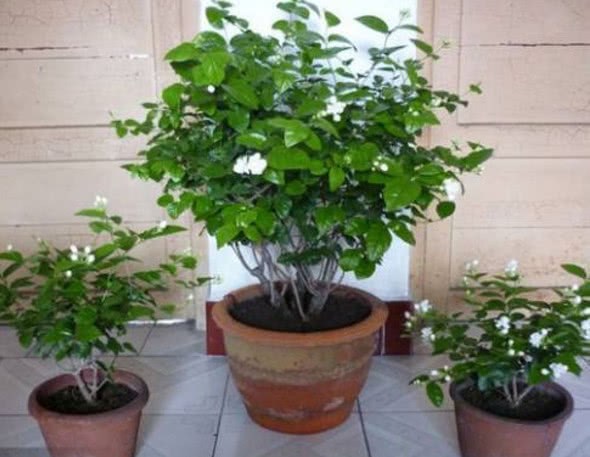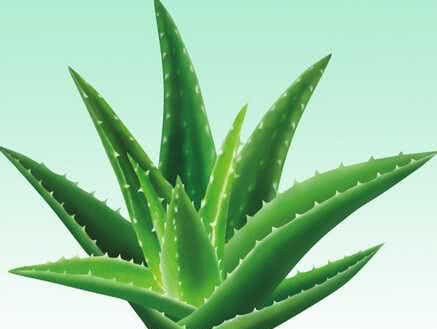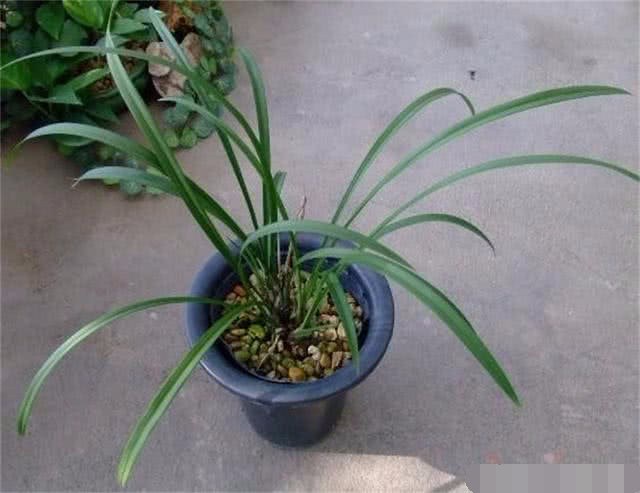It took the old man 30 years to cultivate jasmine into a flower tree, and you can do these six aspects.

Jasmine, with emerald green leaves, white flowers and faint fragrance. People like to keep one or more jasmine at home, which is not only pleasing to the eye, but also pleasant to the eye. But also raise jasmine flowers, there are many friends raise jasmine flowers, either the leaves are rare and yellowing, or the leaves are abruptly large and sparse, and some flowers rarely or even do not blossom, can not survive the winter, and become more unformed after the winter. Some people buy it every year, while others turn jasmine into a flower tree. Below, here are some of the experiences of the teacher who has raised jasmine for 30 years and made jasmine into the god of flowers and trees. I will learn with you about my exquisite life.
First, watering
Watering is always the most talked about topic in the process of raising flowers in the family, and jasmine is no exception. When to water, how to water, what to water has a certain technical content, can not be learned overnight, is the need to constantly carefully operate and learn to accumulate experience.
If jasmine is watered too much, the roots will rot easily, and the rotten roots will wilt and wilt. But its rotten roots are in the basin soil and cannot be seen on the outside. If you are inexperienced, it is easy to think that it is underwatered or malnourished, and then continue to water heavily and fertilize, thus killing the jasmine. "dry jasmine, wet chrysanthemum" is a valuable experience summed up by the older generation from ancient times to the present. It doesn't matter to pour less water on jasmine.
So how on earth should we water jasmine?
1. See dry and wet. The degree of dryness is that the basin soil is dry but not white, and the degree of wetness is that the basin soil is wet but not muddy.
2. On a sunny day, you can see whether the flowerpot is short of water through the jasmine leaves. When the top leaves wilt, knock on the flowerpot with your hand. If the sound from the flowerpot is clear, it means that the soil is dry, and if the sound is stuffy, the soil still contains moisture. Of course, as mentioned at the beginning, sometimes the wilting of jasmine leaves may be due to something wrong with its roots, and the more it is watered, the wilter it becomes.
3. The larger the plant shape is, the greater the water consumption is; the smaller the plant shape is, the smaller the water consumption is.
4. Before putting jasmine into the pot, placing some broken tiles at the bottom of the flowerpot is conducive to the drainage and ventilation of the basin soil.
5. Summer watering is generally appropriate in the morning, but can not be watered at noon, depending on the situation in the evening.
6. It is necessary to reduce the amount of water in autumn to make the basin soil dry as far as possible, and the magic branches and leaves will not wilt as much as possible, so as to promote the Lignification of jasmine branches is beneficial to winter.
II. Fertilization
The survival of plants must have three elements: soil, sunlight and water. If the surviving plants want to be strong and flourish, they must have three elements to provide nutrients: nitrogen, phosphorus and potassium, and jasmine is no exception. With the proper collocation of nitrogen, phosphorus and potassium in jasmine fertilizer, not only flowers and leaves are luxuriant, but also the vitality is tenacious, and the resistance to cold and heat will be improved a lot.
If the fertilizer is not applied properly, the leaves of jasmine will either grow crumpled or sparse, or only grow leaves and blossom rarely. So how to fertilize jasmine?
Don't fertilize potted jasmine in spring. It's the best time to fertilize jasmine after Labour Day holiday. When there are flower buds on the new branches of jasmine, you can take advantage of the dry soil to apply thin water fertilizer to the jasmine before dusk, and water it again the next morning to facilitate the absorption of jasmine fertility. This is very important.
The compost of animal manure is the best for jasmine, but at present, the conditions of most families are not allowed, which is not very realistic. The second is the cake manure water, which is generally mashed and soaked with bean cake, sesame cake, kitchen waste and mixed with water, or soaked in egg shell and soaked with water. If there are no conditions, apply chemical granular fertilizer containing phosphorus and potassium after flower bud germination, and be careful to use as little nitrogen-containing granular fertilizer as possible, otherwise it will only grow leaves and blossom less.
The method of applying granular fertilizer is to turn the basin soil on the edge of the basin slightly, put it in, cover the basin soil, and then water it. The amount of fertilization is generally about 15 cm in diameter flowerpot can put 15 fertilizers, remember the time after use, in accordance with the instructions of the fertilizer requirements to apply regularly.
The period of high temperature and heat from the Dragon Boat Festival to the Mid-Autumn Festival is the full bloom of jasmine. Professional florists have the saying of "head-volt flower season, two-volt flower season, three-volt flower season", which means that flowers bloom like a tide in this blooming season. During this period, once it is found that new buds are formed, fertilizer and water should be applied in time, and the frequency of fertilizer and water should be increased with the increase of the bud, but we should pay attention to the frequent application of thin fertilizer, and when it is budding, we need to stop applying fertilizer.
When the potted soil is too alkaline, the leaves of jasmine will turn yellow, which means it is necessary to replenish acidic elements. Flower traders generally promote the use of ferrous sulfate, but this will be counterproductive. In fact, the Amoy rice water at home is a good material to supplement acidic elements. After putting it into a bottle to fully ferment, use a small amount of water to water the flowers, which is economical and safe.
It is necessary to stop fertilizing in autumn, because as the weather turns cooler and colder, jasmine will gradually enter a dormant period, which not only can not absorb the nutrients of fertilizer, but will burn roots and rot.
3. Pruning
The pruning of jasmine is a very important link. Proper pruning of jasmine in time can not only avoid the waste of jasmine's own nutrients, but also promote the germination of new branches and flower buds, and ensure the beauty of plant shape. And the pruned branches can be cut to propagate new jasmine potted plants.
After the Qingming Festival in spring, the stretching position of jasmine is selected according to the new buds germinated by jasmine, and the pruning is done.
Cut off the residual flowers in time after the jasmine blossoms and trim them according to your favorite plant shape. Here, according to your personal preferences, for example, some friends like the tall and strong type, and some friends like the short type. The tall and strong type can be based on the middle trunk and trim the auxiliary branches; the dwarf type can trim the trunk and make the auxiliary branches extend in all directions, but it is not necessary to generalize that each branch has to subtract a few sections or retain several sections.
Don't prune the branches and leaves in autumn. At this time, you need to use them to store the nutrients of jasmine for the winter. But at this time, the new buds that grow in vain need to be removed in time.
During the period from Qingming Festival to Grain Rain, it is also necessary to pick all the old leaves from the jasmine branches for the winter. These old leaves have completed the mission of protecting the jasmine through the winter, and they will not only hinder the daylighting of the new branches, but also compete for the nutrients of the new branches. So just pick it off. During this period, it is also very important to remove the tip without flower buds from the first or second section of the branch in time, so as to prevent it from growing, which not only affects the plant shape, but also consumes nutrients.
The flower bud conceived by jasmine in April is called "Sui Niang Flower". This flower bud is not a normal flower bud, it germinates earlier, has less amount, and is not very fragrant. This kind of "Sui Niang Flower" also needs to be trimmed clean. in general, the new leaves of jasmine are not green because "Sui Niang Flower" absorbs a lot of jasmine nutrients, so don't just worry about the little bud in front of you and ignore the blooming period after that.
IV. Change the basin
Many friends think that after winter is the most suitable time to change jasmine pots. In fact, according to the experience summed up over the years, the best time to change jasmine pots is after the first phase of jasmine blossoms. Because jasmine happens to have a period of re-sprouting after flowering, and the temperature is relatively high and stable at this time, and the injured root system is easy to recover when changing pots.
Do not fertilize immediately after changing the basin, because when changing the basin will always inadvertently hurt the root system more or less, at this time fertilization is very easy to rot roots. Generally, normal water and fertilizer management can be carried out after 2-3 weeks of basin change.
The jasmine which has just been put into the pot should not be placed in a direct sunlight environment immediately. It should be placed in a ventilated and scattered environment for 3-5 days, waiting for the root system to recover some absorption function slightly before it can slowly receive light until normal.
If there are conditions, the sun-dried "lotus root pond mud" is the best for jasmine basin soil, followed by the old vegetable garden soil. The soil quality requires that it can not only keep moisture, but also have good drainage, and it is required that it is not dry and not white, but not muddy.
5. Lighting
Jasmine is very fond of light, but most buildings today do not have the conditions to get full sunlight, so the jasmine placed on the balcony flower rack needs to turn the orientation of the flowerpot at least once a week to prevent the jasmine from growing into a crooked tree. If there is a need to give jasmine as much light as possible.
VI. Air temperature
The root germination of cutting jasmine mainly depends on the air temperature. when the cutting jasmine is below 30 ℃, the roots and branches grow slowly, so it is not easy to germinate flower buds. If cutting jasmine after autumn is difficult to take root, increasing the light as much as possible may have some hope for the germination of new roots.
The above is the exquisite life of @ Yueying Youzhu teacher's experience of protecting jasmine for more than 30 years. It can be said that every aspect is more detailed. I hope it will be helpful to everyone!
- Prev

The most suitable potted plant for lazy people grows very luxuriant
Welcome to see the article of Xiaobian. I hope Xiaobian's article can make you happy. Please leave a message whether you are good or bad. Every day, Xiao Bian will insist on bringing still wonderful and informative content! Your support is my motivation...
- Next

Raising orchids with two treasures in the river can produce more white roots.
Hello, everyone. I'm glad you can click on this article in the midst of your busy schedule. I hope today's article can bring you surprise and joy. If you are satisfied with the article, please follow the editor to forward the article and share it. The editor wishes.
Related
- Wuhan Hospital Iron Tree Blooming Result Was Instantly Frightened by the Gardener Master
- Which variety of camellia is the most fragrant and best? Which one do you like best?
- What is the small blue coat, the breeding methods and matters needing attention of the succulent plant
- Dormancy time and maintenance management of succulent plants during dormancy
- Minas succulent how to raise, Minas succulent plant pictures
- What are the varieties of winter succulent plants
- How to raise succulent plants in twelve rolls? let's take a look at some experience of breeding twelve rolls.
- Attention should be paid to water control for succulent plants during dormant period (winter and summer)
- Watering experience of twelve rolls of succulent plants
- Techniques for fertilizing succulent plants. An article will let you know how to fertilize succulent plants.

